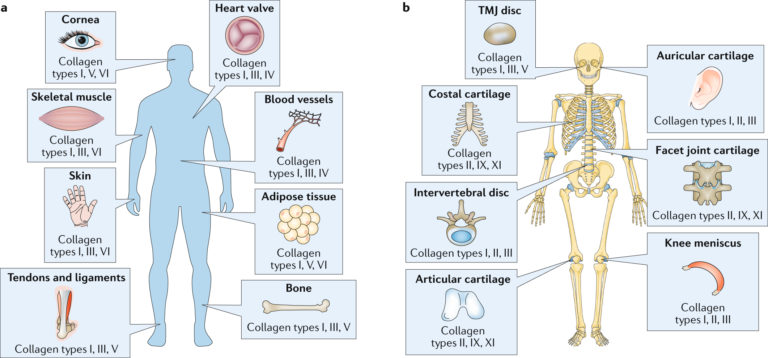UCI Researchers Quantify, Characterize and Identify Functions of Collagen, Its Subtypes

July 24, 2020 - Found in cartilage, bones, blood vessels, skin and other connective tissues, collagens are the most abundant proteins by weight in the human body. In an article published recently in Nature Reviews Materials, UCI biomedical engineering researchers provide an exhaustive description of the superfamily of this biomaterial, which includes 28 subtypes. “Collagen – which has known connections to maladies including cancer, arthritis and more than 40 hereditary diseases – has been the focus of intensive biomedical research for centuries,” said co-author Kyriacos Athanasiou, Distinguished Professor of biomedical engineering and Henry Samueli Chair in Engineering at UCI. “Knowledge about the major subgroups of collagens is well-established, but there is still much we can learn about minor collagens and their cross-links. Indeed, minor collagens play major roles.” Athanasiou’s lab group relies on the latest tools in analytical chemistry and mass spectrometry to fully characterize collagenous tissues – with the goal of engineering “neotissues” that can replace those degraded by disease or injury. In the article, the UCI authors recommend new approaches to studying these materials, such as high-throughput experimentation and machine learning. “Accurate collagen analysis is important to researchers in a variety of fields, including tissue characterization and engineering, drug development and delivery, and biomechanics,” said lead author Benjamin Bielajew, a UCI doctoral student in biomedical engineering. “In this article, we call on biomedical engineers to use modern methods with enhanced sensitivity, specificity and cost-effectiveness to engineer robust tissues. For example, arthritis affects over 30 million American adults, and proper assessment of collagen is a critical step in engineering cartilages to address this massive problem.” Jerry Hu, a UCI program manager in biomedical engineering, also participated in this project, which was funded by three grants from the National Institutes of Health.
– Brian Bell
